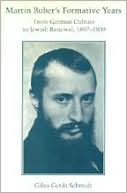Category Books
- Fiction Books & Literature
- Graphic Novels
- Horror
- Mystery & Crime
- Poetry
- Romance Books
- Science Fiction & Fantasy
- Thrillers
- Westerns
- Ages 0-2
- Ages 3-5
- Ages 6-8
- Ages 9-12
- Teens
- Children's Books
- African Americans
- Antiques & Collectibles
- Art, Architecture & Photography
- Bibles & Bible Studies
- Biography
- Business Books
- Christianity
- Computer Books & Technology Books
- Cookbooks, Food & Wine
- Crafts & Hobbies Books
- Education & Teaching
- Engineering
- Entertainment
- Foreign Languages
- Game Books
- Gay & Lesbian
- Health Books, Diet & Fitness Books
- History
- Home & Garden
- Humor Books
- Judaism & Judaica
- Law
- Medical Books
- New Age & Spirituality
- Nonfiction
- Parenting & Family
- Pets
- Philosophy
- Political Books & Current Events Books
- Psychology & Psychotherapy
- Reference
- Religion Books
- Science & Nature
- Self Improvement
- Sex & Relationships
- Social Sciences
- Sports & Adventure
- Study Guides & Test Prep
- Travel
- True Crime
- Weddings
- Women's Studies
Martin Buber's Formative Years: From German Culture to Jewish Renewal, 1897-1909 »

Authors: Gilya Gerada Schmidt, Gilya G. Schmidt
ISBN-13: 9780817307691, ISBN-10: 0817307699
Format: Hardcover
Publisher: University of Alabama Press
Date Published: April 1995
Edition: (Non-applicable)
Author Biography: Gilya Gerada Schmidt
Book Synopsis
Martin Buber (1878-1965) was born into a world of two cultures - his Jewish family and his Austrian fatherland. During his childhood with his grandparents in Galician Lvov, Jewish values and German aesthetics coexisted. But after Buber re-entered fin-de-siecle Viennese society, the world of his grandparents fell apart. Nothing was as it should have been: Jewish hopes for full social integration were disappointed, Yiddish culture seemingly caused modern Jewish youth to be impoverished, and the Jewish religion had become ossified. In his personal confusion, Buber clearly grasped the essence of the problem: emancipation had failed, German culture was dying, Jews were on their own, and tradition was no longer good enough. During the period from 1897 to 1909, Buber's keen sense of the crisis of humanity, his intimate knowledge of German culture and Jewish sources, and his fearlessness in the face of possible ridicule challenged him to behave in a manner so outrageous and so contrary to German-Jewish tradition that he actually achieved a transformation of himself and those close to him. Calling on spiritual giants of great historical periods in German, Christian, and Jewish history - such as Nicolas of Cusa, Jakob Bohme, Israel Baal Shem Tov, Rabbi Nachman of Brazlav, Johann Wolfgang von Goethe, and Friedrich Nietzsche - Buber proceeded to subvert the existing order by turning his upside-down world of slave morality right side up once more. If contemporary life was bankrupt, why lament? Did not God command humanity to act? Buber wholeheartedly immersed himself in the making of a new world, of Zionist culture, of Hasidic spirituality, of Romantic individuality, of unity from diversity. By examining the multitude of disparate sources that Buber turned to for inspiration, this book aims to elucidate Buber's creative genius and his contribution to turn-of-the-century Jewish renewal. Schmidt's timely and comprehensive study concludes that Buber was successful in creating
Booknews
Schmidt (religious studies, U. of Tennessee) concludes that Buber was successful in creating the German-Jewish symbiosis that Emancipation was to have created for the two peoples, but that this synthesis was tragic because it came too late for application by Jews in Germany. She examines the disparate sources he turned to in his efforts to make a new world, such as Zionist culture, Hasidic spirituality, and Romantic individuality. Annotation c. Book News, Inc., Portland, OR (booknews.com)
Table of Contents
| List of Figures | ||
| Preface | ||
| Prologue: The Problem of Individuation and Community | 1 | |
| 1 | A Time of Crisis: Contemporary Cultural Concerns, 1897-1901 | 5 |
| 2 | Academic Beginnings: Apprenticeship in Aesthetics, 1897-1904 | 21 |
| 3 | Kadima! Apprenticeship in Jewish Culture, 1898-1905 | 48 |
| 4 | Hasidism: Apprenticeship in a Life of the Communal Spirit, 1905-1908 | 90 |
| Epilogue: Toward a Synthesis of All Syntheses | 118 | |
| Appendix | 127 | |
| Notes | 131 | |
| Selected Bibliography | 161 | |
| Index | 169 |
Subjects
 Judaism & Judaica
Judaism & Judaica  Jewish Philosophy
Jewish PhilosophyChristianity
 All Religion
All Religion  General & Miscellaneous Religion
General & Miscellaneous ReligionHistory
 European History
European History  German History
German HistoryHistory
 Religious History
Religious History  General & Miscellaneous Religion
General & Miscellaneous ReligionHistory
 Religious History
Religious History  Judaism & Judaica
Judaism & JudaicaHistory
 World History
World History  Jewish History
Jewish HistoryJudaism & Judaica
 Jewish Philosophy
Jewish Philosophy  Buber, Martin (1878 - 1965)
Buber, Martin (1878 - 1965)Nonfiction
 Philosophy
Philosophy  General & Miscellaneous Philosophy
General & Miscellaneous PhilosophyNonfiction
 Social Sciences
Social Sciences  Jewish Studies
Jewish StudiesPhilosophy
 General & Miscellaneous Philosophy
General & Miscellaneous Philosophy  Jewish Philosophy
Jewish PhilosophyReligion Books
 Judaism & Judaica
Judaism & Judaica  Jewish Philosophy
Jewish PhilosophyReligion Books
 All Religion
All Religion  General & Miscellaneous Religion
General & Miscellaneous ReligionScience & Nature
 Social Sciences
Social Sciences  Jewish Studies
Jewish StudiesSocial Sciences
 Jewish Studies
Jewish Studies  Jewish History
Jewish HistorySocial Sciences
 Jewish Studies
Jewish Studies  Jewish Philosophy
Jewish PhilosophyChristianity
 Christianity
Christianity  All Religion
All ReligionNonfiction
 History
History  European History
European HistoryNonfiction
 History
History  Religious History
Religious HistoryNonfiction
 History
History  World History
World HistoryNonfiction
 Religion
Religion  All Religion
All ReligionReligion Books
 Christianity
Christianity  All Religion
All Religion
